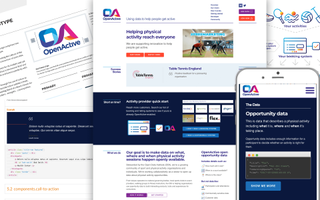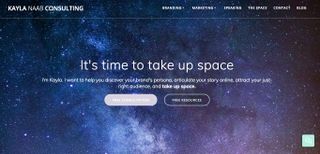It probably won’t surprise you to know that the creative industry is full of shy and introverted people; we’re all familiar with the idea of the quiet artist, beavering away studiously in the corner. But there are two things you might not be aware of.
Firstly, although the terms are often used interchangeability, shyness and introversion are not the same thing. An introverted person finds social activity tiring, and craves periods of solitude to recover (as opposed to an extroverted person, whose energy rises when being actively social). But that doesn’t necessarily mean they lack confidence: so it’s possible, for example, to be a shy extrovert, or a confident introvert.
A second thing you might not be aware of, if you’re a shy and/or introverted creative planning to go freelance, is that you’re in good company. It might not seem like it, but many of the most successful people in our industry are in exactly the same boat. Even if it doesn't show in their portfolios (see our favourite design portfolio examples and see if you can guess who's an introvert).
But how do you promote yourself, if the mere idea of learning how to network or selling your services to strangers makes you want to curl up into a ball?
Clients enjoy someone who actually listens to them when they talk, and introverts are most of the time very good at listening to people
Mylène Boyrie
First of all, you should realise that introversion or shyness can be beneficial to your creative life. As freelance designer Mylène Boyrie points out: “Clients enjoy someone who actually listens to them when they talk, and introverts are most of the time very good at listening to people. If you take advantage of this, it helps you to better understand the clients' personalities and how you’re going to communicate effectively with them.”
In this post, we speak to a range of freelance creatives who’ve felt daunted by self-promotion, hear about their experiences, and get their top tips for breaking out of the self-promo panic.
01. Pursue personal projects

Award-winning designer Craig Minchington has suffered from social anxiety throughout his freelance career, and speaks openly and thoughtfully about his mental health challenges on his Medium blog.
Get the Creative Bloq Newsletter
Daily design news, reviews, how-tos and more, as picked by the editors.
“Anxiety can make everything difficult, and can be crippling at times,” he tells us. “And as a freelancer, it often makes it difficult to deal with self-promotion. Things like networking events and meet-and-greets, making yourself known face-to-face, or cold-calling studios can be gut-wrenching and exhausting. I certainly wasn’t up to facing that at first. So I looked in to alternative ways to promote myself.”
One strategy he found useful was to focus producing personal projects or collaborations. “Think about it,” he says. “You have new work to show off, and it’s often your best stuff because it’s what you want to be creating and you’re excited to show it to the world.
“You can produce and promote it all from a comfortable place, at home, via social media channels, or if you collaborated on the work then your partner in crime can help promote it too.”
02. Set yourself goals

Another way that Minchington often promotes himself is to make tailored portfolios and send them out to contacts. “These can be people you know, peers you have made over the internet, or people you have searched out online,” he explains.
“Do you want to have your work seen by the creative director from XBox? Then jump on LinkedIn and take the time to find the right people to send work to. If there is a studio you love, then don’t send a portfolio to their generic ‘Hello@example.com’ email address; give them a call and ask for the best person to send an email through to. People are generally nice and will often look to help you out.”
Of course, a lack of confidence can hold you back in doing these things effectively. “I used to start all my emails with an apology, like I was taking up their time,” he recalls. “Something like ‘Sorry for bothering but was hoping that if you had a second you may take the time to look at my portfolio”….what the hell is that? So remember that you went freelance because you feel that your work offers something to the world; if not why are you doing it? You need to wear that confidence, just don’t be arrogant.”
Most importantly, he stresses, don’t expect instant results. “It is unlikely that you’ll officially stick your ‘freelance’ flag pole in to the ground and that second work will start flying in,” he notes. “So have a plan of what you would like to achieve, how you’re going to go about getting work, and what you’ll do if you don’t get anything for a little while. Have a passion project in mind to fill those quiet days. Having daily, short-term and long-term to-do lists and goals will help keep you on track.”
03. Make the most of online communities

An interactive designer and web developer based in Birmingham, Sush Kelly describes himself as “mainly introverted but a little bit shy. I can speak to people but have to suppress anxiety, which sometimes means I don’t focus 100 per cent on the conversation.”
For this reason, he’s channelled his networking efforts online throughout his career. “Real-life networking is never on the top of my list, as it pushes all my shy/introvert buttons,” he explains. “Having to approach a group of people I don’t know and talk to them, retain names, and big myself up are things that don’t come naturally to me. I've toughed it out when needed, but only when the potential outweighed the things holding me back.”
Being able to break down these initial barriers means a future meeting won’t be half as anxiety-inducing
Sush Kelly
In contrast, he’s found the web a much better place to promote himself. “You can have conversations and engage with people you most likely wouldn’t in real life situations,” he enthuses. “For example, I chat to quite a few notable designers and developers on Twitter, but would probably have bottled walking up to them at a conference. Being able to break down these initial barriers means a future meeting won’t be half as anxiety-inducing.”
Of course, social media can often be anxiety-inducing in itself, but he stresses that you don’t have to flaunt yourself. "For example, Instagram Stories and vlogging are not my thing at all, but I do like a nicely framed arty Instagram shot and writing, so I know can have an impact in those areas," he says. "Just stick to channels that don’t trigger you. Try and force yourself to engage in things if the opportunity is really good, but don’t sweat it if not.”
Finally, he notes that: “Video chats are not as hectic as real life. In fact, after having a fear about them, I'm starting to quite like them. Just remember to drive the conversation so you don’t have those weird moments of silence or both speaking!”
When it comes to interacting with people in real-life, Boyrie finds it a great help if she’s previously spoken to them on social media. “There are people whom I've known on Twitter for years, and have never met them,” she says. “But when I do meet these people, usually at conferences, we already have a common ground, stuff to talk about, and have a sense of the other's personality.”
And this is something she feels is getting easier and easier. “Introvert personalities are a little more understood and accepted than 10 years ago, and there are many introvert accounts to follow” she says. “So try to find likeminded people. They’re dealing with the same difficulties as you, which means you can both relate, share tips, have meaningful conversations and feel less like outcasts.”
04. Do your research

Based in Nottingham, Mark Leary is an artist, illustrator, designer, photographer, project manager and art director. Shyness is not a big day-to-day issue for him, he notes. “When I'm in a situation where I feel I know what I'm doing, such as in my work, I'm relatively confident,” he says. “I’m only really shy in situations where I'm uncertain, such as on the first day backstage at an event where I don't really know my way around yet.”
He does, however, class himself as an introvert. “I enjoy collaborating creatively and chatting through ideas, but find social interactions quite draining,” he explains. “So if I have a few days that are packed full of calls, meetings and collaboration, I'll try to plan in a couple of days of work by myself after that, to collect my thoughts and recharge my social batteries.”
All this limits his options when it comes to self-promotion. “I'm not someone who feels confident marching into an unfamiliar situation unprepared, so cold-calling around studios, publications or record labels was never going to be in my skill set,” he says.
If I want to self-promote, I have to do the research and build the connections over time, in order to be able to do so confidently
Mark Leary
Over time, though, he’s come to realise that that's a good thing. “Because it means that if I want to self-promote, I have to do the research and build the connections over time, in order to be able to do so confidently, and I’ve found that gets better results than cold calling anyway.”
Importantly, he feels that building personal relationships is not all about one-way traffic. “Recommendations and introductions are a big part of my self-promotion work,” he says. “For example, I work with artists, producers, labels, managers, PRs and printers across the music industry. So I can often introduce one to the other to help fill a gap in their production chain. And equally, I'll ask them to look out for opportunities to connect me with anyone who might be able to use my services”
“It's a really organic process and it's not a straight transaction like, ‘You recommend me for X and I'll recommend you for Y’. It's more a case of making those connections when the opportunity arises, so all the time, I'm seeing new client enquiries come in where it's a case of, ‘I was given your name by…’.
05. Don't avoid chances to network

Many people find the idea of real-world networking at events terrifying. But you don’t have to spend the whole time hustling and thrusting your business card into strangers’ faces. Leary suggests that even if you spend most of the time in the corner, attending the event in itself can be worthwhile
“It's easy to avoid events and opportunities to network because you feel like you're too introverted for it to be worthwhile,” he says. “But even if you only talk to one person, it's one more connection you wouldn't have made from your desk. Also, people get to know your face, and being able to put a face to a name can make all the difference when it comes to recommendations.”
06. Write a blog

Boyrie first went freelance in 2010. But being both shy and introverted, she initially suffered greatly from 'imposter syndrome'.
“At that time, most of the advice I found about promoting yourself was written by, and for, extroverts,” she recalls. “So for a while, it felt like I didn't belong in this community, because I wasn't this outgoing person who mingles easily with other people in social gatherings and has no problem giving a spontaneous elevator speech to a total stranger.”
One self-promotional technique that did work for her, though, was writing a blog. “I published tutorials and tips in line with the work I was doing, and got some really good feedback,” she explains. “That brought me some new clients, as well as setting myself up as knowledgable and articulate about my work.”
She went on to design video courses, and the feedback was even better, which got her more gigs. “I was then asked to give real-life training in professional training centers and design and web schools. These experiences were hard at first, but they gave me a little more self-confidence, and I started to enjoy training people.”
07. Get involved with events

Boyrie’s blogging helped to both promote her services to clients and boost her confidence generally. “I started attending meetups, more to learn than to mingle, to be honest, which is still difficult for me,” she says. “But then I started being part of the local WordPress community where I live, and soon was part of the organising team too. We organised two WordCamps, and I found that I helps a lot with talking to people and mingling.”
In short, being in an official capacity breaks down many of the psychological barriers to chatting with strangers. “People spontaneously come to talk to me, because they know who I am, or just see that I'm part of the team on my badge and T-shirt, and that takes a lot of anxiety out of being sociable,” says Boyrie.
And as technology leader Kevin Goldsmith noted, this applies to giving talks too. “One of the reasons I like speaking at conferences is because it makes networking a lot easier,” he tweeted. “People know who you are and have something to talk to you about. Seems counterintuitive, but one of the best things for introverts is to become speakers!”
08. Find an event buddy

Boyrie’s final tip for real-world networking is to try to find someone who can accompany you to meetings and social gatherings. “It's really hard to be in the situation where you don't know anyone in the room and hang out alone in a corner while eveyone ignores you,” she says. “I experienced this several times. It sucks.”
Who to ask? “Maybe you have a friend that work in the same line of work than you, or have met one or two people who are frequent visitors of your coworking space. Also, when going to a meetup, for example, you can check on the website who is going to be there. Maybe you already know someone, or you can ask someone if they want to go to the event with you?
“Also, some conferences try to create ice breaker situations to help people talk to each other and mingle, so take advantage of that, if you can. And if you know someone on Twitter and know they are going to be there, you can ask them if they want to meet with you, too.”
09. Make the trade-off

While there are many strategies to help you self-promote, there’s no sugar-coating it: as a shy or introverted person, you’ll probably be at a disadvantage compared to more confident and extroverted people. And so at a certain level, that’s probably going to mean making some kind of trade-off between your life and work.
Kayla Naab offers a good example. Based in Washington, she’s a consultant helping entrepreneurs and small businesses with their branding and content marketing. Yet she describes herself as “introverted full-time and socially uncomfortable sometimes”; something she’s aware doesn’t always mesh well with her line of work.
“Referrals are a huge part of service businesses, so being averse to networking is something I struggle with,” she says. “I’m a good writer and that's been a saving grace for digital promotion, but a lot of it has been saving up all my social energy for business. And so I don't do as much recreationally social any more. Plus I try to spread out my prospecting calls or other overwhelming tasks, so I don't burn out.”
It's important to understand this is all a trade-off
Kayla Naab
And yet she has no regrets about making the plunge from salaried worker to freelancer. Because the former wasn’t exactly a cakewalk either, and freelancing does at least let you manage your activities in a way that suits you.
“It's important to understand this is all a trade-off,” says Naab. “Instead of eight straight daily hours of pretending to care about your co-workers’ problems, making small talk with your boss, and being in meetings in person, you can spread out your people-handling, mute yourself in meetings, and cuddle a pet of your choice.
“Yes, you'll trade for having to be on sales calls, manage client relationships, and promote yourself but theres another hidden benefit: all that work is worth it when it's an investment in you. Why do that same amount of work and be just as uncomfortable at a job, plus lose time commuting, gain less diverse experience, and give it all to make someone else's dream come true? Decide what's worth it to you.”
Read more:

Thank you for reading 5 articles this month* Join now for unlimited access
Enjoy your first month for just £1 / $1 / €1
*Read 5 free articles per month without a subscription

Join now for unlimited access
Try first month for just £1 / $1 / €1
Tom May is an award-winning journalist and editor specialising in design, photography and technology. Author of the Amazon #1 bestseller Great TED Talks: Creativity, published by Pavilion Books, Tom was previously editor of Professional Photography magazine, associate editor at Creative Bloq, and deputy editor at net magazine. Today, he is a regular contributor to Creative Bloq and its sister sites Digital Camera World, T3.com and Tech Radar. He also writes for Creative Boom and works on content marketing projects.
